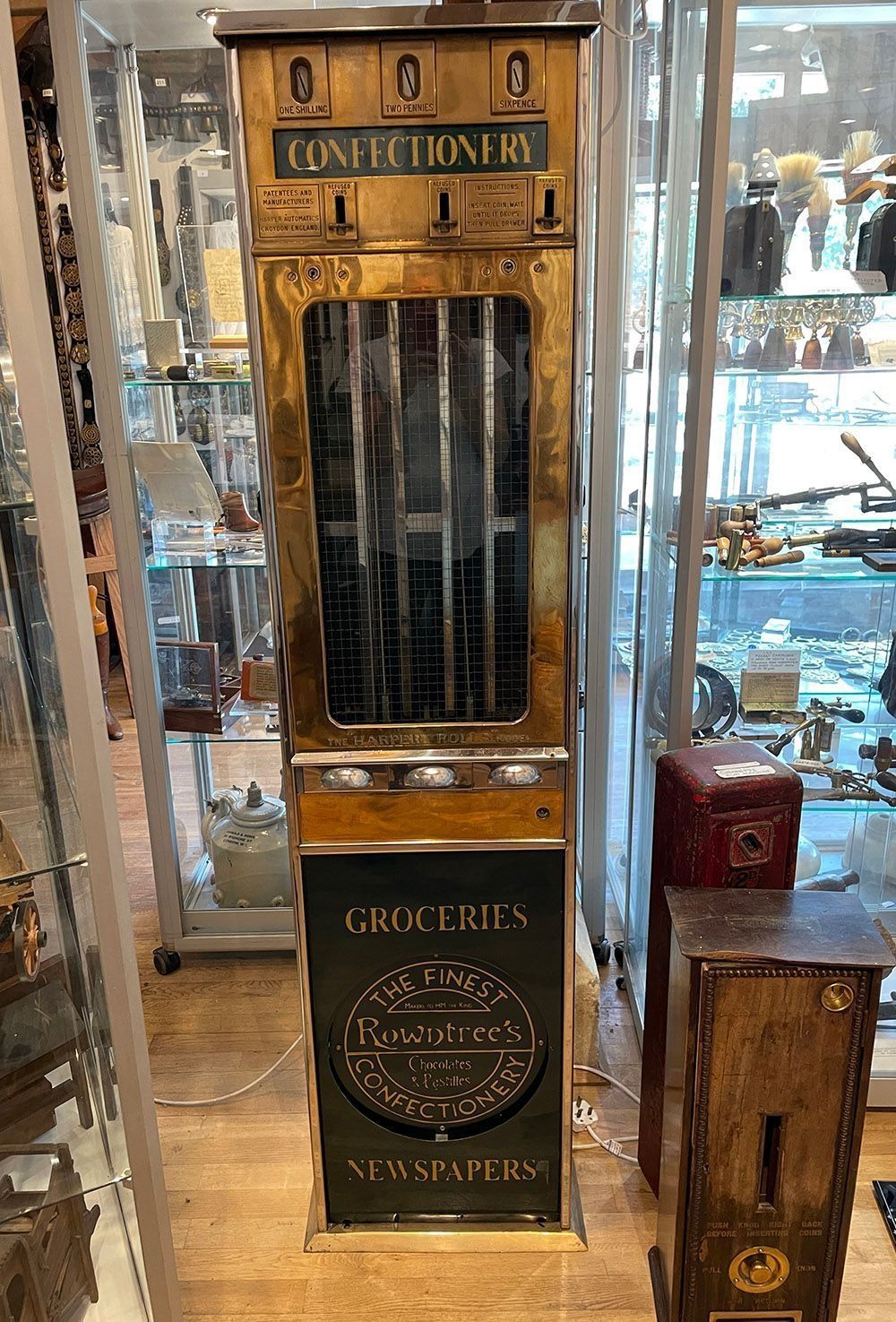Harpers Rolls Model Confectionary Dispenser
Name/Title
Harpers Rolls Model Confectionary DispenserEntry/Object ID
2025.1.379Description
Tall chrome, brass and glass dispensing machine for confectionary.Context
Shortly after the First World War, (Oliver) Harper’s Automatic Vending Company set up business in what became known as the Orchard Industrial Estate, Church Lane near Carshalton. Their slot machines and weighing scales were once a familiar sight on railway station platforms. They also manufactured tin toys. Vending machines have early origins and the first can be traced back to 215 BCE, documented by the Greek mathematician Hero. It was a coin operated device that dispensed a small amount of holy water on insertion of a five-drachma coin. When the coin landed on a pan connected to a lever, the weight on the lever opened a valve allowing enough water to flow to fill a cup. The pan was on a slant and when the coin fell off the pan the lever retracted and the valve closed. The next rudimentary coin operated machine was c 1615 in English taverns, to dispense tobacco but required manual lid closure after each use. The subsequent most ingenious machine was invented in 1822 by a bookseller named Robert Carlile, as a newspaper dispensing machine, then in 1867 Simeon Denham won a patent for the first fully automatic machine for dispensing stamps. In 1893 a German chocolate manufacturer called Stollwerck sold their chocolate through 15,000 vending machines. Gradually vending machines were installed on most railway stations dispensing a variety of products from chewing gum to soap and by the 1920s were dispensing toiletries in women's rest rooms.Category
Business




